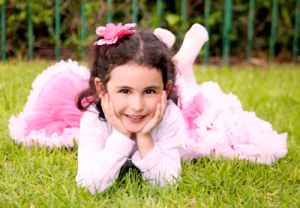 Providing Low Vision Assistance in New York City
Providing Low Vision Assistance in New York City
Despite the name, juvenile macular degeneration is not the same condition as age-related macular degeneration. Juvenile macular degeneration, also known as macular dystrophy, refers to a group of genetic eye disorders that can develop in children and adolescents. In contrast, age-related macular degeneration occurs as a part of natural aging.
What is Juvenile Macular Degeneration?
In general, macular degeneration describes a breakdown of the macula, which composes a small area of your retina. The macula is responsible for your central vision and seeing fine details. You depend upon your macula to read small print, do needlework and see the hands of a clock.
The most usual type of juvenile macular degeneration is Stargardt disease. Other less common versions of this sight-threatening condition include juvenile retinoschisis and Best’s disease. At present, there is sadly no treatment to prevent vision loss from juvenile macular degeneration.
Who is at risk?
As an inherited disorder, juvenile macular degeneration is passed down from parent to child. There are a variety of inheritance patterns involved. For example, Stargardt disease must be inherited from both parents, whereas Best’s disease only has to be inherited from one parent.
What are the symptoms?
The primary symptom is a problem with central vision, which may have dark spots, or be blurry and distorted. Peripheral vision is not typically affected, yet when the disease progresses color vision may be skewed. These signs generally appear during childhood and may not present themselves equally in each eye.
While some of our Manhattan and New York City patients with juvenile macular degeneration retain useful vision into their adult years, others lose their eyesight and experience low vision sooner. Additionally, kids may also exhibit signs of involuntary eye movement (nystagmus) and misaligned eyes (strabismus).
Low Vision Assistance for Juvenile Macular Degeneration
Unfortunately, there is no treatment or cure for this eye disease. However, Low Vision Assistance can help many people to maintain independence and maximize their quality of life. Dr. Charles Hollander is dedicated to enhancing the lives of people with juvenile macular degeneration by prescribing and offering the most optically advanced low vision assistance available.
Low Vision can be very frustrating for patients of any age. When kids cannot read their smartphones, watch TV, or play sports competently, they are at a high risk of depression. At our Manhattan eye care clinic, we work with each patient individually to recommend the best low vision devices and strategies. We’ll customize your low vision assistance to meet your vision condition, lifestyle and favorite hobbies.
Depending upon the unique needs and preferences of the patient, low vision assistance may be provided by telescopes for distance, telemicroscopic eyeglasses for close tasks and/or powerful magnifying devices. In addition to these low vision aids, we may also direct you towards a range of non-optical adaptive devices, such as audio books and custom light fixtures.
At Sight Improvement Center, we take pride in designing inventive, personalized solutions for each and every patient with juvenile macular degeneration.
If you have diabetes, you need to know that having this systemic disease puts you at greater risk for developing vision problems.

